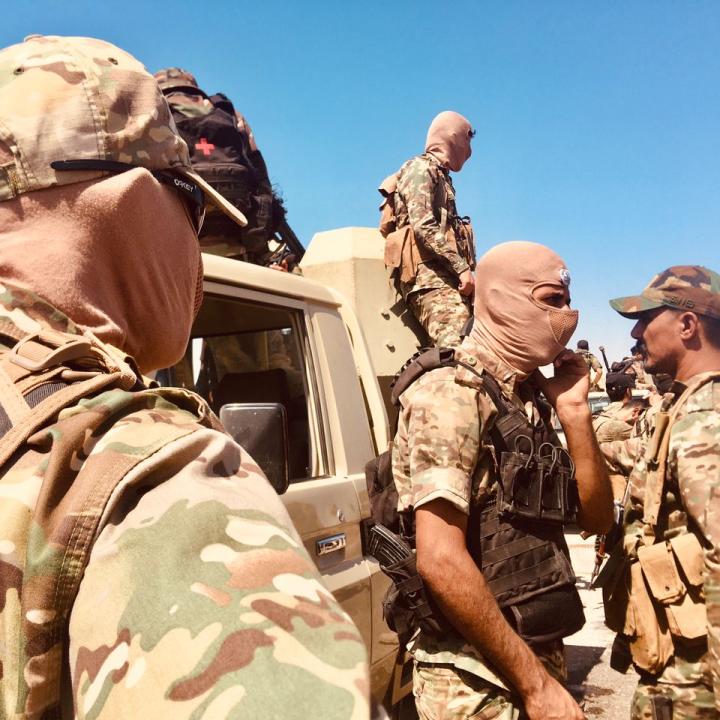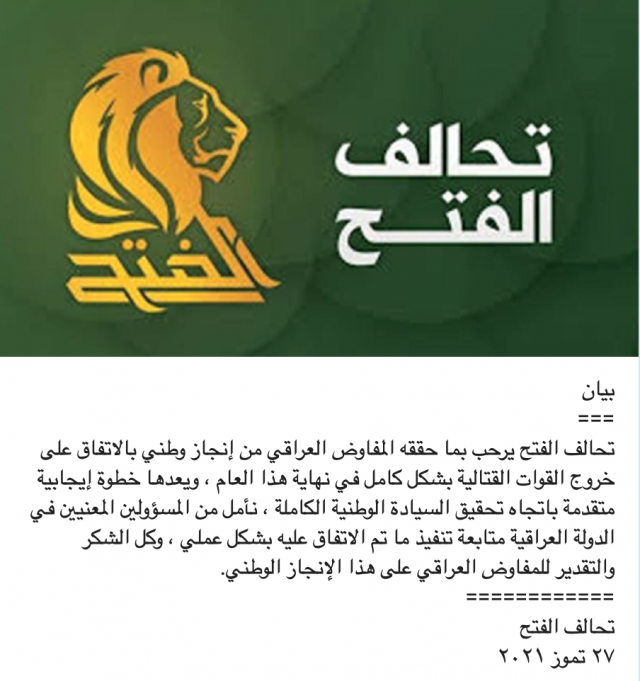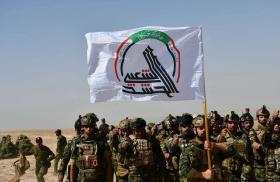
Muqawama Struggle to Show Cohesion on "Withdrawal" of U.S. Forces

A pan-Shia forum and Lebanese Hezbollah prodded the Tansiqiya to grudgingly paper over cracks in solidarity among resistance groups.
On July 26, President Biden announced that U.S. combat troops will end their mission in Iraq by the end of 2021. The news visibly divided the country's muqawama (resistance) groups into two camps. The first, led by the Badr Organization, was quick to celebrate the bilateral agreement. The Fatah Alliance, dominated by Badr but also including Asaib Ahl al-Haq (AAH), issued a statement on July 27 hailing the news as a “national achievement” and a “positive step toward realizing full national sovereignty” (Figure 1).
The second camp underlined its deep dissatisfaction with the announcement. On July 23, even before the bilateral talks in Washington began, senior Kataib Hezbollah (KH) figure Abu Ali al-Askari predicted that the meetings would be “theatrical” and a “deception” (Figure 2).
On July 28, Abu Ala al-Walai, the secretary-general of Kataib Sayyid al-Shuhada (KSS), branded the dialogue "caricature-like" and promised to continue attacking coalition forces (Figure 3).
Yet when the Iraqi Resistance Coordination Committee (al-Haya al-Tansiqiya lil-Muqawama al-Iraqiya, or Tansiqiya for short) convened on July 28, the tone slightly changed. Rather than voicing immediate rejection or a decision to escalate, the resultant Tansiqiya statement adopted ambiguous language and included an article that could be interpreted as a "wait and see" strategy: “The muqawama will retain full readiness until the real withdrawal happens and will take action...if the withdrawal turned out to be not real" (Figure 4).
So what happened in the intervening days that brought the stances of the two camps closer together? According to remarks by muqawama figures, one factor was dialogue held under the Shia Coordination Framework (al-Etar al-Tansiqi al-Shia), a talking shop of around nine majority-Shia political parties (including Badr and AAH) that has been meeting a couple of times each month since the October 2019 mass protest movement began.
On July 28, AAH leader Qais al-Khazali told al-Ahd TV: “I need to mention an important development that happened during this period, the period of the dialogue...between the Iraqi government and U.S...[This] development is the good understanding and coordination that took place between the muqawama coordination committee [i.e., the Tansiqiya] and the Shia Coordination Framework...Brothers in the coordination framework made what we believe to be sincere and real efforts to pressure the prime minister to adopt the real demands. These brothers asked us for a truce to provide the suitable circumstances to help make the PM’s visit [to Washington] successful...and out of respect to the brothers in the coordination framework, the operations were halted for a few days...We believe the development related to the relationship between the [muqawama] coordination committee and the [Shia] coordination framework is a positive and important development.”
KH’s July 29 statement likewise mentioned the framework, offering its “thanks and appreciation to the brothers in the coordination framework for their great confidence in the Iraqi muqawama fasail (armed factions), and for bearing the burdens in order to provide everything that is good for Iraq and its people” (Figure 5). The statement concluded: “We appreciated the efforts made by the sincere brothers who were members of the negotiating delegation, who performed their duty but didn’t achieve what was expected.”
The AAH and KH statements serve a number of purposes. First, they both showed respect to Qasim al-Araji, the Iraqi national security advisor and a Badr member, who went to Washington ahead of the prime minister to shape wording on the withdrawal of U.S. combat forces.
Second, the Shia Coordination Framework appears to have tried to paper over the cracks in muqawama positions on the Washington agreement. The softening of language coincided with a visit to Baghdad by Lebanese Hezbollah senior representative Muhammad al-Kawtharani, probably underlining the concern felt by the group and its Iranian patrons regarding the wide initial gap in positions taken by the politically focused Fatah Alliance and the more extreme muqawama fasail.
The schism was not so easy to fix, however, and AAH began to pick away at the agreement very quickly. On July 30, AAH facade group Ashab al-Kahf (AK) issued a statement fiercely attacking those who “publicly claim to be [part of] the muqawama but in private meet with the Americans” (Figure 6). This would appear to be a swipe at Badr figures such as Hadi al-Ameri and Araji, whom Khazali hopes to surpass as the leading power within the Fatah Alliance in the coming elections.
These Badr leaders may be tempted to adopt more extreme positions as elections loom and AAH tries to "out-muqawama" them. It will also be interesting to see whether the fasail closest to Iran’s Islamic Revolutionary Guard Corps (e.g., KH, Harakat Hezbollah al-Nujaba, and KSS) can maintain message discipline and a disappointed but basically supportive tone.










